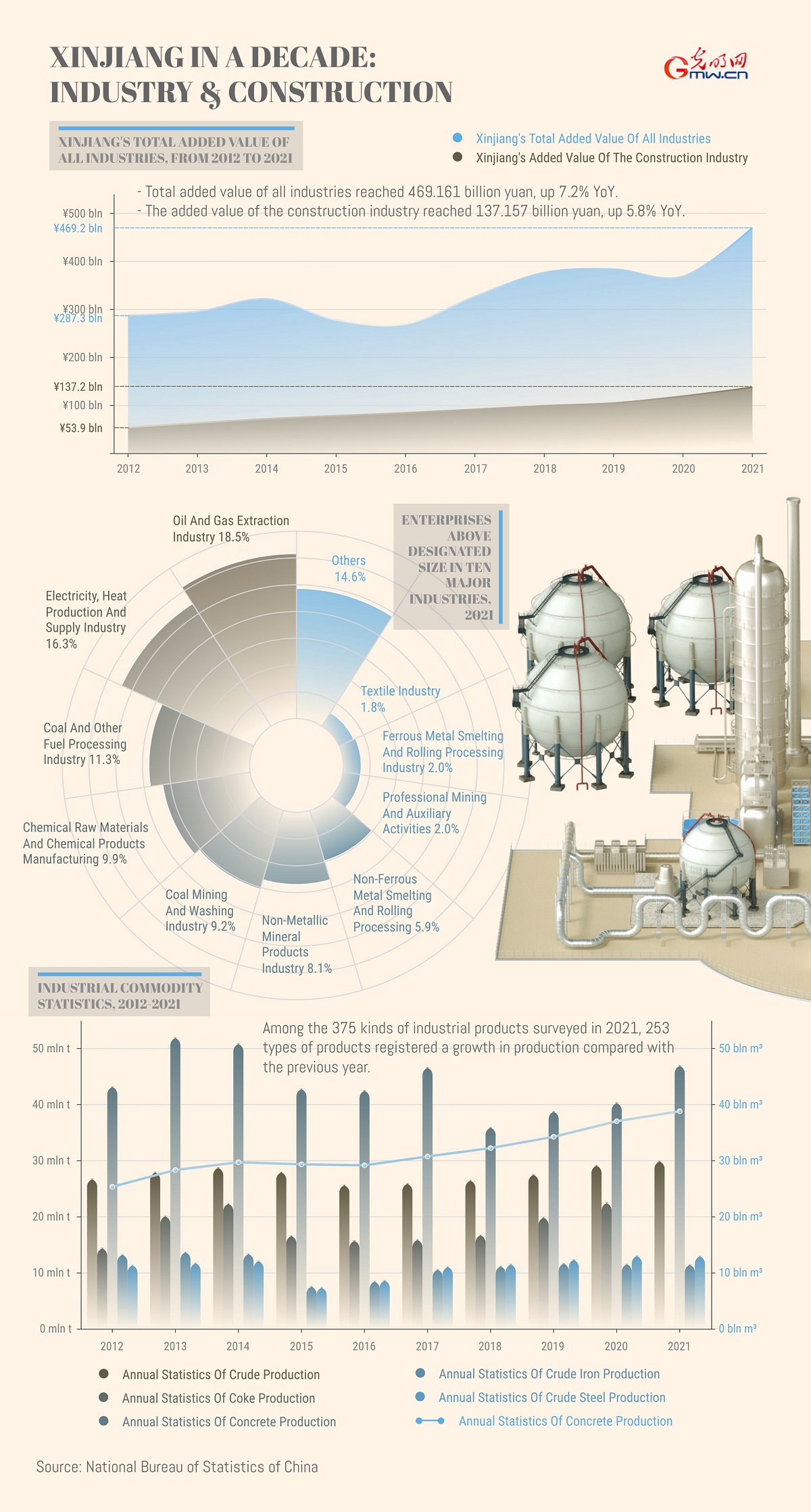

By Wang Xinyuan

Since the 18th National Congress of the Communist Party of China, Xinjiang has given full play to its regional and resource advantages, implemented the new development concept, deepened structural reform on the supply side, actively adapted to and grasped the new normal of economic development, seized the great opportunity of the construction of the core area of the Silk Road Economic Belt, actively cultivated and expanded industries with characteristic advantages, focused closely the people's livelihoods to promote quality development, and embarked on a new road of industrial transformation and upgrading.
Total added value of all industries in Xinjiang reached 469.2 billion yuan in 2021, twice of the number in 2012 (287.3 billion yuan). Added value of the construction industry reached 137.2 billion yuan, almost tripple as much as 2012 (53.9 billion yuan).
During the past decade, Xinjiang has initially formed a modern industrial system with regional characteristics, benefiting all ethnic groups and conducive to quality development. The system is supported by energy industries such as petrochemical, electric power, nonferrous metals and coal chemical industry, guided by strategic emerging industries such as new materials, new energy and advanced equipment manufacturing, and characterized by labor-intensive industries such as textiles and garments, agricultural and sideline products processing and electronic product assembly.
In 2021, among enterprises above designated size in 10 major industries, oil and gas extraction industry increased by 1.7%, electricity, heat production and supply industry grew by 12.7%, oil, coal and other fuel processing industry grew by 5.1%, chemical raw materials and chemical products manufacturing grew by 13.7%, coal mining and washing industry grew by 31.3%, non-ferrous metal smelting and rolling processing grew by 10.8%, non-metallic mineral products industry grew by 17.4%, professional mining and auxiliary activities grew by 13.3%, ferrous metal smelting and rolling processing industry grew by 2.0%, and textile industry grew by 19.4%. Among them: non-metallic mineral products industry, electricity, heat production and supply industry, ferrous metal smelting and rolling processing industry, chemical raw materials and chemical products manufacturing, non-ferrous metal smelting and rolling processing industry, petroleum, coal and other fuel processing industry registered an added value increase of 11.3%, accounting for 53.8% of the total added value of industrial enterprises above designated size.
Among the 375 kinds of industrial products surveyed, 253 types of products registered a growth in production. A total of 64.485 billion cubic meters of natural gas were transported through the region via pipelines, of which 24.91 billion cubic meters were locally produced but transported outside the region; total outbound electricity hit 122.34 billion kilowatt hours, up 16.0%.
The added value of high-tech manufacturing in 2022 increased by 7.1% YoY, accounting for 2.0% of the value added of industrial enterprises above designated size. Investment in high-tech industry increased by 31.64 billion yuan, up 23.4% YoY.
Xinjiang will continue to accelerate the transformation and upgrading of the industrial economy, improve the quality and efficiency of development, actively optimize economic structure, transform growth momentum, and make every effort to start a new journey of quality industrial development.
点击右上角![]() 微信好友
微信好友
 朋友圈
朋友圈

请使用浏览器分享功能进行分享
